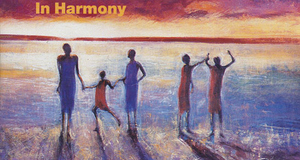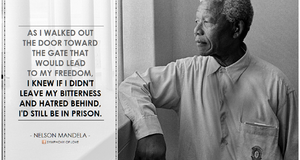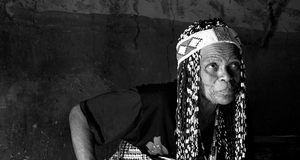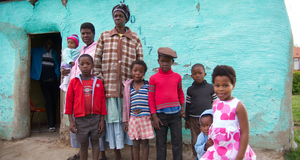Complementary Spheres of Resistance in the Anti-Apartheid Struggle: The Relationship Between Formal and Informal Arenas of Protest
By
2020, Vol. 12 No. 11 | pg. 1/1 AbstractThe African National Congress is widely credited as the institutional body that effectuated the fall of Apartheid in South Africa. While the formal actions of the ANC enfeebled the National Party, the political party only represents one source of resistance in the anti-Apartheid movement. Citizen-driven protest movements, too, provided crucial support to the anti-Apartheid struggle. In order to truly understand the end of Apartheid, however, it is necessary to consider the African National Congress and the informal citizen-driven protest movements as not as separate entities, but as mutually dependent, complementary spheres of resistance. Crucially, the legitimacy of the ANC as a political body helped bring the grassroots, informal protest movement to the attention of the international community. Overall, while citizen-led collective action efforts directly targeted the inherent vulnerabilities of the regime and palpably altered racial power relations the ANC legitimized and institutionalized the movement, granting the struggle the international reach and political leverage necessary to negotiate the end of Apartheid. Reflecting on the anti-apartheid struggle in his 1994 inaugural speech, African National Congress leader Nelson Mandela (1994) addressed the South African people: “We understand it still that there is no easy road to freedom. We know it well that none of us acting alone can achieve success. We must therefore act together as a united people, for national reconciliation, for nation building, for the birth of a new world. Let there be justice for all.” The ANC is often considered to be the primary vehicle responsible for leading the South African nation down a “road to freedom” and achieving this proclaimed state of “freedom,” “justice,” and “national reconciliation” (Mandela, 1994) for the South African population. Although the political party’s crucial role in the anti-apartheid struggle cannot be minimized, the movement must be viewed holistically, recognizing, in addition, the indispensable contributions of citizen-mobilized uprisings. What is most essential to understanding the success of the anti-apartheid struggle, however, are the complementary actions of these entities of social and political change. Although the ANC and citizen-inspired uprisings possessed distinct roles in the anti-apartheid movement, the political party and the grassroots social actions maintained a symbiotic, interdependent relationship that provoked the demise of the regime. While citizen-led collective action efforts, most saliently evidenced by the Durban Strikes of 1973, directly targeted the inherent vulnerabilities of the regime and palpably altered racial power relations, the ANC legitimized and institutionalized the movement, granting the struggle the international reach and political leverage necessary to negotiate the end of apartheid. In order to understand the mutually supportive actions of the ANC party and the general anti-apartheid social movement, it is important to have a definitional foundation of these distinct agencies of change. According to Mario Diani (1992), social movements are “networks of informal interaction between a plurality of individuals, groups and/or organizations, engaged in a political and/or cultural conflict, on the basis of a shared collective identity.” By contrast, Swen Hutter (2018) broadly defines political parties as “organizations that represent and aggregate citizens’ interests so that electoral majorities can be built to govern a country.” In other words, political parties represent citizens’ desires in an institutionalized political arena, while social movements voice the people’s opinions through informal, noninstitutionalized political action. Despite these differences, both entities of change generate and facilitate the process of democratic representation; they often “build on each other’s respective strengths,” as political parties “(bring) to the institutional arena the issues defended by social movements” (Hutter, 2018). Utilizing the political process approach, Hutter (2018) puts forth the notion that, “political parties are part of the alliance and conflict structure in which social movements are embedded.” In relation to the anti-apartheid struggle, the ANC and the citizen-driven social movement employed differing strategies yet fought for the same goal of black freedom against an identical adversary, the Nationalist Party. The ANC served as a legitimate umbrella organization with a unifying and far-reaching ideology under which the broader domestic and international anti-apartheid social movement could mobilize and identify.Robert Michels (1915) introduced the notion that mass social movements face pressure to institutionalize in order to truly advance their goals When undergirded by an ideological alliance with a social movement, Kitschelt (2006) posits that such a process of institutionalization is eased and expedited: “political entrepreneurs in parties shift to the institutional site of partisan electoral competition without making requisite investments in overcoming challenges of collective action and social choice that politicians encounter in electoral and legislative arenas.” Because the ANC party and the citizenry driving the social movement were united under an identical goal-- to free the black population of the country from the oppression of apartheid-- once the ANC gained the political leverage to formalize, the party entered the electoral arena backed by the popular support of the people. The end of apartheid era came to fruition with the formalization of the African National Congress; the institutionalization of the movement, however, was made possible by local resistance efforts that weakened the National Party and thus created a political opening for the newly formalized ANC. Structural changes in society in the 1960’s allowed acts of informal civil disobedience to directly target the foundations upon which apartheid was built. The flourishing South African economy, with abundant mineral resources and an increasing industrial capacity, had become wealthy through the exploitation of black unskilled laborers. However, these racial fetters that had once facilitated economic growth proved to obstruct further progress. As Steven Friedman (2017) points out, “as firms grew from profits wrought from labor repression, so did their need for skilled labor,” which could no longer be found among a minority white population. Black workers took advantage of this inherent vulnerability of the regime’s repression, and in 1973, over 30,000 non-unionized black workers in the greater Durban industrial area refused to go to work. With the health of the country’s already-imperiled economy at further risk, South African officials were forced to “temper repression and seek ways of winning black co-optation” (Friedman, 2017). Rather than engaging in blanket repression, the National Party conceded wage demands and granted workers limited union rights. Not only did the infamous strike grant the South Africans tangible concessions, but it fostered a growing alliance between workers and other liberation organizations. With the growing strength of such an alliance, the Durban Strike of 1973 instigated a wave of similar worker-organized strikes and boycotts, resulting in repeated concessions of space to black workers. By the end of the decade, black workers had procured full union rights. The multiplying labor reforms “fueled black worker militancy (and) created new openings of resistance” (Friedman, 2017) in the form of boycotts and mass protests. The ability of these resistance movements to exploit the flaws embedded in the apartheid system and assert the heightening power of the oppressed majority “terrified the government.” (Friedman, 2017) The Durban Strike and its offspring of similar uprisings was a testament to the crucial role of the ordinary citizen in shaping anti-apartheid opposition. The Durban Strikes support Tom Lodge’s (2012) contention that “political opposition to apartheid would be shaped mainly by local dynamics.” It is important to recognize, however, that these “wider anti-apartheid forces took place against the background of the African National Congress,” (Anti-Apartheid Movement Report to the AGM, 1989) the movement’s national representative political party. Citizen uprisings like strikes and boycotts effectively framed their stakes of mobilization “as short-term, discrete, and narrowly-focused single-issue objectives,” which complemented and progressed the ANC’s “long-term, durable...quest to change basic societal institutions.” (Kitschelt, 2003) The African National Congress provided the citizens in the anti-apartheid movement an all-encompassing ideology under which citizens could mobilize; the anti-apartheid movement, according to the ANC, was a liberation movement, a movement that both welcomed and leveraged the distinct, yet symbiotic, powers of formal and informal mediums of protest. The additive and marginal concessions granted to these citizens through acts of local agency coalesced to progress the ANC’s overarching, all-inclusive goal of black liberation. In order to achieve this goal of black liberation, the ANC summoned the assistance of the international community, which bolstered the effectiveness of citizen-mobilized protest. The agency of the ANC, the movement’s focal source of legitimacy, successfully garnered such support as they “received...diplomatic recognition from governments and international agencies.” (Hakan, 2004) Citizen uprisings such as the Durban Strikes palpably altered power dynamics in South Africa, and the supplementary actions of the international community, galvanized by the ANC, put further pressure on the regime. According to Kay Lawson (2006), national political parties are “among the most powerful participants in the international arena,” and it was the ANC’s ability to “conduct a world-wide diplomacy” (Hakan, 2004) that broadened the domestic social movement into the international realm. The ANC effectively globalized the social movement that materialized on domestic soil. More importantly, the political party, while leveraging the respective strengths of the international and domestic realm, unified the once-disparate social movements under their formal mission and political purpose: to unify the South African nation under equal rights and shared freedoms. The ANC’s ability to bridge international and domestic social movements proved fatal for the Apartheid regime. With respect to the aforementioned structural changes of the 1960’s and 70’s that citizen agency capitalized upon, South Africa’s “white minority regime found itself dependent upon...the industrialised West to maintain its repressive political system and its high level of modernisation” (Zunes, 1999). In fact, there was “$13 billion worth of annual trade between South Africa and the West...combined with $30 billion in foreign investment” (Zunes, 1999), that supplied the regime with the technology and materials necessary to maintain their industrialized state. The ANC, through the diplomatic efforts of Nelson Mandela and other ANC leaders in the 1960’s, formed a strategic alliance with the Anti-Apartheid Movement (AAM) in Great Britain, an umbrella organization that networked with hundreds of protest bodies across 37 countries. Expanding the reach of the social movement beyond domestic borders, the AAM advanced and augmented the ANC’s call for a boycott and sanctions in order to economically cripple to the regime. Recognizing the ANC, as the representative body of the struggle “with an inspiring history of sacrifice, statesmanship, and heroism,” (The Case for Sanctions Speech, 1981) the international community responded to such a call. In the 1980’s and into the early 1990’s, South Africa’s yearly growth rate suffered by approximately 1.5% due to sanctions alone, which, former President F.W de Klerk conceded, “did serious damage to the country” (de Klerk, 1999). The ANC as a political party was a pivotal player in isolating South Africa from the world economy, and the intensifying unrest of the citizen-organized social movement further discouraged foreign investment. In fact, “while many private businesses were feeling the pressure in their home country to disinvest, the political instability of the country was the primary concern for many of the foreign companies” (Laverty, 2007). With the respective actions of the ANC and local citizen agents working in tandem for the same goal (albeit in different arenas of protest), “South Africa (began) to feel the squeeze put on by their foreign debts” (Laverty, 2007) This international sanction movement, promoted by the ANC and complemented by the efficacy of local strikes, crippled the South African economy and undermined the National Party to such an extent that “brought (the regime) to the negotiating table with the ANC.” (Zunes, 1999) With the National Party in a state of utter enfeeblement by the early 1990’s, there was a blatant vacancy in the nation’s institutionalized political arena. Acting as “the primary organisational vehicle through which black South Africans pursued their rights” (Zunes, 1999) the ANC capitalized upon such a void. Already possessing the necessary investments in organizational infrastructure, the popular support of the majority, and legitimate leadership, the established political party facilitated the institutionalization of the citizen-driven anti-apartheid social movement. The South African nation arrived at the of end apartheid through formal political negotiations dominated by the leaders of the ANC and the National Party. After the Pretoria Minute, a landmark 1990 negotiation in which the ANC agreed to suspend violence and advance peacefully through negotiations, de Klerk remarked that Mandela was “a politician to be reckoned with” (Lodge, 2006). Despite the hostilities between the organizations, the National Party rendered the ANC, social movement’s representative political party, legitimate. The desires of the oppressed citizens, whose agency in the social movement planted them in a position of political power, could be deemed credible and brought to the institutional arena under the ANC. Although negotiations were routinely met with staunch opposition and even derailed by violence, by 1993, the Multi-Party Negotiating Forum legalized elections under a newly-drafted democratic constitution. The African National Congress captured 62.65% of the vote in the first democratic election of 1994, a testament to the party’s broad majority support. The social movement did not end with Nelson Mandela’s inauguration, but rather “(became) a political party in order to defend and represent their interests directly in the electoral channel” (Hutter, 2018). The institutionalization of the social movement under the ANC completely transformed South African society, but this transformation could not have been achieved without the strategic agency of citizens in harmony with support garnered by the political party. Citizen resistance during the anti-apartheid social movement harmoniously accompanied the legitimate representation and international reach of the African National Congress, which dismantled the apartheid regime. Although each form of protest-- formal and informal-- played a discrete role in eroding the power of the oppressive regime, it was the complementary strategies of citizen agency and the ANC that decisively liberated South Africa’s black population. The anti-apartheid struggle did not only achieve palpable societal reforms, but completely transformed society through the mobilization of thousands of domestic and international political actors. With the memory of apartheid saliently rooted in society, the ANC has since thrived, winning every election since its 1994 entrance into the electoral arena. Such a feat serves as evidence of the power of the symbiotic relationship between the ANC and citizen agency during the anti-apartheid struggle. References(1981, October 24). Speech at the Conference on "The Case for Sanctions." Speech presented in Dublin, Ireland. ANTI-APARTHEID MOVEMENT REPORT TO THE AGM. (1989, October). Retrieved from http://psimg.jstor.org/fsi/img/pdf/t0/10.5555/al.sff.document.aamp2b1200022.pdf de Klerk, F. (1999). The Last Trek-A New Beginning. New York, NY: St. Martin's Press. Diani, M. (1992). The Concept of Social Movements. The Sociological Review, 40(1). https://doi.org/10.1111/j.1467-954X.1992.tb02943.x Friedman, S. (2017). The Sounds of Silence: Structural Change and Collective Action in the Fight against Apartheid. South African Historical Journal, 69(2). https://doi.org/10.1080/02582473.2017.1293719 Hutter, S., Kriesi, H., & Lorenzini, J. (2007). Social Movements in Interaction with Political Parties. In D. A. Snow (Ed.), The Blackwell Companion to Social Movements (pp. 322-337). Retrieved from http://10.1002/9781119168577.ch18 Kitschelt, H. (2003). Landscapes of Political Interest Intermediation: Social Movements, Interest Groups, and Parties in the Early Twenty-First Century. In P. Ibarra (Ed.), Social Movements and Democracy. Houdsmill, Basingstoke: Palgrave-MacMillan. Kitschelt, H. (2006). Movement Parties. In R. S. Katz (Ed.), Handbook of Party Politics (pp. 278-289). Kruszewska, D. (2015). Social Movements and Political Parties. Department of Government, Harvard University. Retrieved from http://projects.iq.harvard.edu/files/mobilized_contention/files/movementsandparties.pdf Laverty, A. (2007). Impact of Economic and Political Sanctions on Apartheid. The African File. Retrieved from https://theafricanfile.com/politicshistory/impact-of-economic-and-political-sanctions-on-apartheid/ Lawson, K. (2006). The International Role of Political Parties. In R. Katz (Ed.), Handbook of Party Politics (pp. 483-491). Lodge, T. (2006). Mandela: A Critical Life. Retrieved from https://ebookcentral.proquest.com/lib/cornell/detail.action?docID=431069 Lodge, T. (2012). Reflections on Black Politics in South Africa since 1945. South African Historical Journal, 64(3). https://doi.org/10.1080/02582473.2012.670508 Mandela, N. (Presenter). (1994, May 10). Inaugural Speech. Speech presented in Pretoria, South Africa. Michels, R. (1915). Political parties: A sociological study of the oligarchical tendencies of modern democracy. Hearst's International Library Company. Thorn, H. (2004). Anti-Apartheid and the Emergence of a Global Civil Society. In D. Healey (Ed.), St Antony's Series. Thörn, H. (2004). St Antony's Series: Anti-Apartheid and the Emergence of a Global Civil Society (J. Zielonka, Ed.). Retrieved from https://www.sahistory.org.za/sites/default/files/file%20uploads%20/hakan_thorn_anti-apartheid_and_the_emergence_of_book4you.org_.pdf Zunes, S. (1999). The role of non-violent action in the downfall of apartheid. The Journal of Modern African Studies, 37(1). Retrieved from https://www.cambridge.org/core/services/aop-cambridge-core/content/view/2A1AC6C4C02CB1A44AFA87CDBBC757D1/S0022278X99002967a.pdf/role_of_nonviolent_action_in_the_downfall_of_apartheid.pdf Suggested Reading from Inquiries Journal
Inquiries Journal provides undergraduate and graduate students around the world a platform for the wide dissemination of academic work over a range of core disciplines. Representing the work of students from hundreds of institutions around the globe, Inquiries Journal's large database of academic articles is completely free. Learn more | Blog | Submit Latest in Political Science |


















